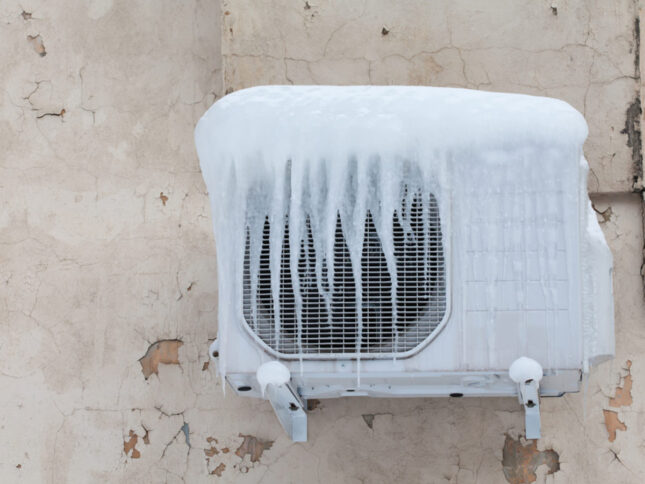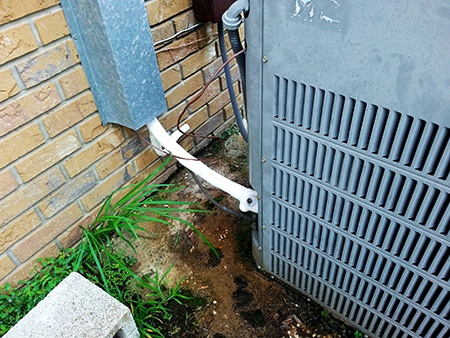Steps to Take If My AC Pipe Is Frozen - Quick Solutions for Thawing
Steps to Take If My AC Pipe Is Frozen - Quick Solutions for Thawing
Blog Article
This post listed below on the subject of How can I fix an air conditioner’s frozen pipe? is truly intriguing. You should keep reading.

Introduction
Discovering that your a/c pipeline is frozen can be concerning, particularly throughout hot summer season when you rely upon your ac unit the most. Recognizing what to do in such a situation is essential to avoid additional damage to your cooling system and ensure your comfort indoors.
Comprehending the Causes
A number of aspects can add to the cold of an air conditioner pipeline. Comprehending these causes can help you deal with the issue effectively.
Lack of Airflow
One common source of an icy air conditioner pipeline is inadequate air flow. When the air flow over the evaporator coil is restricted, it can create the coil to drop below freezing temperature level, causing ice development on the pipe.
Low Refrigerant Levels
Insufficient cooling agent degrees in your air conditioner system can also lead to a frozen pipe. Reduced refrigerant degrees can trigger the pressure in the system to drop, resulting in the freezing of dampness on the evaporator coil.
Winter Conditions
In cooler environments, freezing temperature levels outside can contribute to the cold of air conditioner pipelines. If your air conditioning device is not appropriately insulated or if there are leakages in the ductwork, cool air can infiltrate the system, creating the pipeline to freeze.
Dirty Air Filters
Unclean or stopped up air filters can restrict air movement in your a/c system, resulting in numerous problems, including an icy pipe. It's essential to change or clean your air filterings system regularly to make sure appropriate air movement and stop ice buildup.
Indicators of a Frozen AC Pipe
Identifying the indicators of a frozen air conditioner pipeline is essential for prompt action.
Lowered Airflow
If you discover a substantial decrease in air movement from your vents, it could show a frozen pipeline.
Ice Buildup on the Pipe
Noticeable ice accumulation on the refrigerant line or the evaporator coil is a clear indication of an icy AC pipe.
Unusual Sounds from the Unit
Uncommon audios, such as hissing or bubbling, originating from your air conditioner system can signify that there's ice present on the pipeline.
Immediate Actions to Take
When faced with an icy a/c pipe, it's important to act promptly to stop further damages to your air conditioning system.
Turning off the air conditioning
The primary step is to turn off your a/c to stop the system from running and exacerbating the problem.
Looking for Blockages
Evaluate the location around the indoor unit for any type of blockages that might be blocking airflow, such as furniture or curtains.
Defrosting the Pipe
You can use mild methods like putting towels soaked in warm water around the icy pipeline to help thaw it slowly.
Preventive Measures
Taking preventive measures can aid avoid future incidents of a frozen AC pipe.
When DIY Methods Fail
If your attempts to thaw the pipe or address other issues are unsuccessful, it's time to call in an expert.
Importance of Hiring a Professional HVAC Technician
A licensed HVAC specialist has the know-how and devices essential to detect and repair issues with your air conditioner system safely and effectively.
Normal Maintenance Checks
Set up normal upkeep get in touch with a specialist HVAC specialist to guarantee that your AC system is running effectively.
Altering Air Filters
Frequently replace or clean your air filters to stop air movement constraints and preserve optimum efficiency.
Protecting Exposed Pipes
If your a/c pipes are exposed to cold temperature levels, think about protecting them to prevent cold during winter season.
Seeking Professional Help
If DIY methods stop working to solve the concern or if you're not sure regarding how to continue, it's finest to look for support from a qualified HVAC professional.
Final thought
Handling a frozen a/c pipeline can be a frustrating experience, yet knowing just how to respond can aid minimize damage and restore comfort to your home. By recognizing the causes, acknowledging the indicators, and taking timely activity, you can efficiently address the issue and protect against future incidents.
Frozen AC Line: Why It Happens & What To Do About It
A frozen AC line can be a rather peculiar sight in a place like Phoenix, Arizona where nothing ever freezes. In this post, we’ll discuss what makes an air conditioner line frozen – and what you can do about it.
Dirty Air Filters
Did you know that you should be cleaning or replacing your air filters on a monthly basis? Failing to do this can result in airflow issues that, in turn, cause your evaporator coils and lines to freeze over. You’ll notice a buildup of ice on both components, although the buildup on your pipes will, of course, be more evident unless you open your air condition up to reveal the coils.
What To Do About It
Give your air filter a good cleaning if it’s reusable. If not, replace the filter outright. Next, switch your air conditioner’s fan setting on and leave it there for 2-3 hours. This will draw warm air in, helping to thaw your evaporator coil. You can also check out this article for some tips on cleaning the coils themselves if you’d like to speed the process up. Before you switch the unit back to its normal state, make sure the supply vents are completely unobstructed and free of dust or other debris.
If you keep having this issue even after replacing your filters regularly, contact a local HVAC repair company and have them inspect your evaporator coil, ductwork, and any other components that may be at fault. If you live in the Phoenix, Arizona area, give American Home Water and Air a call.
Low Refrigerant Levels/Leakage
What To Do About It
Contrary to what air conditioner “recharge” companies often tell their clients about refrigerant, it should never need to be simply refilled. You see, refrigerant runs in what experts refer to as a “closed loop.” Refrigerant really shouldn’t be leaving that loop. If it is, you’ve got a leak.
Paying someone to come and pump more refrigerant into your system (aka “recharge” it) isn’t the solution. Doing that will simply kick the can down the road. Besides, refrigerant leaks can be harmful to the environment and people in your home.
Rather, you need to take care of the leak with the help of a technician. Check out this article for some more information about dealing with air conditioners that are leaking refrigerant. Before you contact a technician, switch your thermostat to the off position. Then, switch the fan setting on and let it run for 2-3 hours so the unit can thaw.
Improper Temperature Setting
Improper temperature settings can also cause a drop in your air conditioner’s pressure. What many people don’t realize is that air conditioners are actually designed to run when temperatures have fallen above roughly 60 degrees Fahrenheit. If you run the unit when it’s cold outside, you’ll run into many issues, including frozen components.

I ran across that page on Why Is Ice On My Outside Air Conditione when doing a lookup on the web. So long as you enjoyed our article if you please remember to share it. I take joy in reading our article about Why Is Ice On My Outside Air Conditione.
Get Offer Report this page